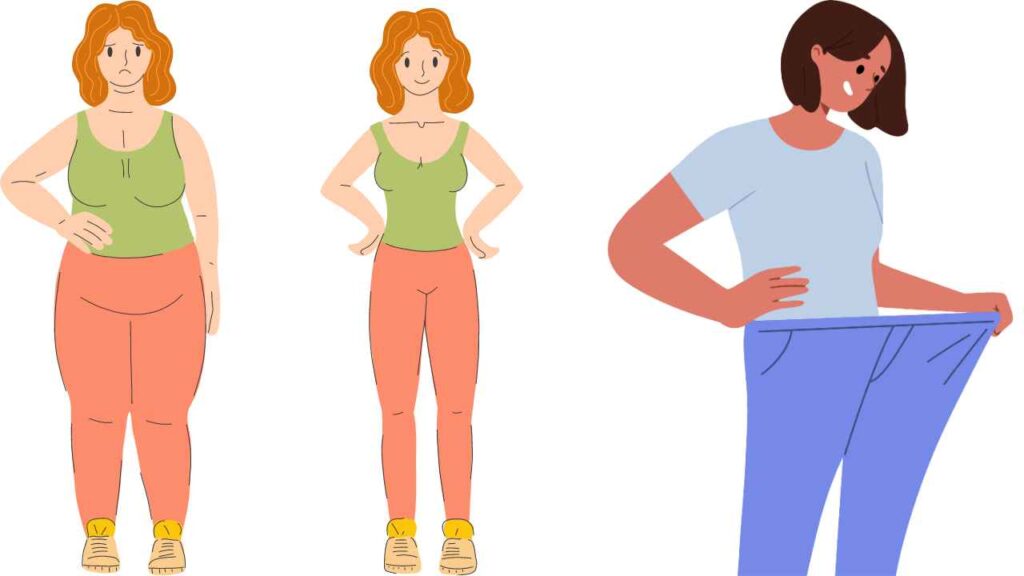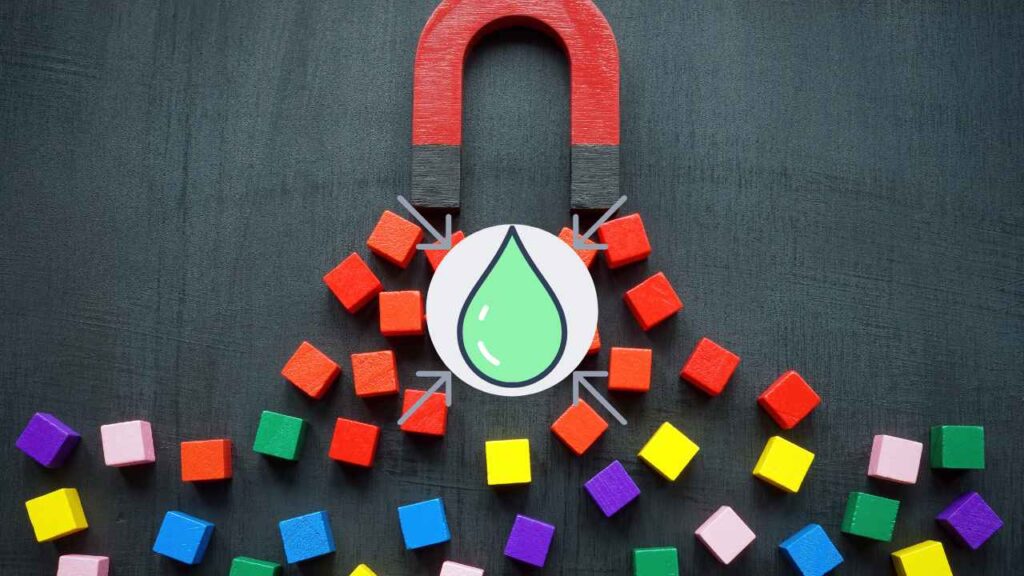Does Working Out Make Your Waist Bigger? The Surprising Truth

Explore if strength training expands your waist and tips to stay slim while gaining muscle.
Introduction
It’s common for your waist size to temporarily increase when you start a new workout routine. This can be concerning and discouraging for some people. However, a bigger waist doesn’t necessarily mean you’re gaining fat. There are a few key reasons why your waistline expands during the initial weeks of working out:
Muscle Growth

When you start a new strength training routine, your muscles adapt by growing bigger and stronger. This is because strength training causes small tears in the muscle fibers, which the body then repairs by fusing those tears and adding more protein to the muscles. This muscle protein synthesis is what causes your muscles to grow larger.
As you continue progressively overloading the muscles with heavier weights and more reps, the body keeps repairing and building the muscles. Over time, the muscles get bigger and more defined. This muscle growth is lean mass, meaning it’s made of denser muscle rather than fat.
So in the beginning of a new workout routine, it’s normal for the muscles like your arms, back, shoulders, chest, and legs to get larger and more defined. This added lean muscle mass can make your waistline and upper body look a bit wider or thicker, even as you simultaneously lose fat. The number on the scale may also go up initially. But this is actually a positive change, as you are adding metabolically active muscle mass, which will help you burn more calories and fat over time.
Fat Loss

When you start a new workout routine, especially strength training, your body undergoes changes in fat and muscle composition. Exercise burns calories, putting your body in a calorie deficit if you maintain the same diet. This calorie deficit forces your body to pull from its fat stores for energy.
Over time, regular exercise reduces overall body fat percentage. Spot reduction of fat in specific areas like the waist is not possible, but losing fat all over will eventually slim your waistline. The more intense the workout, the more calories burned, expediting fat loss. Combining strength training that builds muscle with cardio that burns calories is an effective approach.
Patience is key, as it can take weeks or months to notice significant fat loss from exercise. But sticking with a consistent workout routine will have an impact over time. The result is a leaner physique with less fat around the waist and throughout the body.
Water Retention

It’s common to experience some water retention and temporary waist expansion when starting a new workout routine. Here’s why:
Intense exercise causes microtears in the muscle fibers as they adapt to the increased workload. As part of the healing process, the body rushes fluid to the muscles to deliver nutrients and remove metabolic waste. This influx of fluid causes muscles to swell and expand slightly.
In addition, a hard workout can stimulate an increase in stress hormones like cortisol. Cortisol signals the kidneys to retain more sodium and water, which leads to bloating and water weight gain.
This normal post-workout swelling and water retention is usually maximal about 24-48 hours after the workout. It may cause your waist measurement to temporarily increase by an inch or so.
However, rest assured that this post-workout bloating is not actual fat gain. It will subside within a few days as the acute effects of the workout resolve. Remaining patient and consistent with your fitness regimen will allow you to start seeing real leanness results in your waistline.
Weight Fluctuations
When you start a new workout routine, especially one focused on strength training, you may notice your weight fluctuate up and down on the scale. This is completely normal and to be expected.
The reason is that muscle tissue is denser and heavier than fat tissue. So as you start to build lean muscle mass through exercise, the number on the scale may go up even though you are losing fat. One pound of muscle takes up less space than one pound of fat.
It’s important not to get discouraged by the numbers on the scale. Your body is changing composition and becoming stronger and healthier, even if the scale weight is not decreasing steadily downward.
Focus on how your clothes are fitting, your endurance, your strength gains, and how you feel overall. The scale doesn’t tell the whole story.
Trust the process and be patient. If you are exercising consistently and eating a healthy diet, the fat loss will come. But your weight may fluctuate up and down temporarily as you build muscle. Over time you’ll start to see the scale weight decrease as well.
Waist Measurement Timing
Taking waist measurements consistently is crucial for accurately tracking changes over time. The time of day that measurements are taken can significantly impact the results.
It’s best to take waist measurements first thing in the morning, before eating or drinking anything. Overnight, as you sleep and fast, your body sheds water weight and bloating. Measuring your waist first thing in the morning provides a consistent “baseline” measurement before food and drink are consumed.
Throughout the day, your waistline can expand slightly as you eat, drink, and go about your regular activities. Normal digestive processes cause temporary bloating and water retention that can increase waist size. Even mild daily fluctuations in water weight and bloating can skew measurement results if not taken consistently at the same time of day.
For the most useful progress tracking, take waist measurements under consistent conditions – in the morning before eating or drinking anything. This controls variables and provides an accurate picture of any true changes occurring over time as you workout. Consistency is key for correctly interpreting waist measurement data.
Body Recomposition
When you start working out, especially strength training, your body goes through a process called recomposition. This means that you are losing fat mass while gaining muscle mass. So while your weight on the scale may not change much, your body composition is transforming.
The number on the scale doesn’t tell the whole story. You may be losing inches around your waist and hips while gaining muscle in your arms, legs, back, and core. This muscle gain offsets the fat loss when it comes to your total body weight. But you are still becoming leaner and your waist is still getting smaller.
Recomposition results in a tighter, toned, and shaped body – even if the numbers on the scale haven’t budged. The scale is limited because it cannot distinguish between fat, muscle, bone density, and water weight. But if you are building muscle while losing fat, you are absolutely making progress towards your fitness goals.
Patience and consistency are key. Take measurements and photos so you can track your recomposition progress in more ways than just your weight. The number on the scale is not the only metric that matters. Focus on how you look and feel as you become stronger, fitter, and leaner.
Health Over Size
When starting a new workout routine, it’s easy to become obsessed with numbers on the scale or measurements around your waist. However, the number one priority should be improving your overall health and fitness. Focusing too much on waist size can lead to unhealthy behaviors as you try desperately to make the numbers budge.
The most important thing is consistency with your workouts and nutrition. Dramatic results don’t happen overnight. As long as you are challenging yourself and eating a balanced diet, you will start to feel stronger, have more energy, and become fitter. These are the key signs that your hard work is paying off.
Rather than stepping on the scale or measuring your waist every day, take monthly progress photos or focus on how your clothes are fitting. Are your arms becoming more toned? Do you have more endurance during your workouts? Can you lift heavier weights? These are the types of fitness goals you should aim for.
The number on the tape measure does not define your worth or progress. Over time, as you become healthier and fitter, you may start to see positive changes in your waist measurement as well. But don’t let it become an all-consuming fixation. Focus on overall wellbeing, strength, and fitness first and foremost.
Patience
Getting fit and building muscle is a marathon, not a sprint. It’s important to have realistic expectations when starting a new workout routine or diet. Many people expect to see drastic, overnight changes in their bodies. However, it takes time and consistency to truly transform your physique.
When you start working out, you may notice some initial gains as your muscles become pumped with blood and water. However, true muscle growth occurs gradually over weeks and months. Fat loss also does not happen instantly. It takes a consistent calorie deficit over an extended period to burn noticeable amounts of fat.
Furthermore, as you lose fat and gain muscle, your weight may stagnate or even increase. This is because muscle tissue is denser than fat. Pay more attention to how your clothes are fitting and how you feel vs. the number on the scale. Take monthly progress photos as well.
The most important thing is to stick with your program and have patience. Your body is changing for the better even if you can’t always see it. Stay consistent with your workouts and nutrition, and your hard work will pay off over time. Appreciate small wins and milestones along the way. Building your ideal physique takes dedication, but it’s a rewarding journey. Focus on sustainable habits over quick fixes for long-term success.
Conclusion
When starting a new workout routine, it’s normal to see some changes in your waist measurement. However, it’s important not to get discouraged.
The most likely reasons for a bigger waist when beginning to workout are muscle growth, water retention, and normal weight fluctuations. Over time, with consistency, your body composition will improve as you lose fat and gain muscle. But this takes patience!
Try not to obsess over the numbers on the scale or exact waist size. How your clothes fit can be a better indicator of progress. Stay focused on getting healthier, stronger, and feeling better. Developing fitness and strength should be the priority rather than simply losing inches.
With consistency in your diet and exercise, your waist measurement will decrease as you lose fat over the coming weeks and months. But it will take time. Stick with it, be patient with yourself, and keep your eye on the big picture of improved health and fitness. Over time, your hard work will pay off!



Great article! I really appreciate the clear and detailed insights you’ve provided on this topic. It’s always refreshing to read content that breaks things down so well, making it easy for readers to grasp even complex ideas. I also found the practical tips you’ve shared to be very helpful. Looking forward to more informative posts like this! Keep up the good work! YouTube Downloader Online